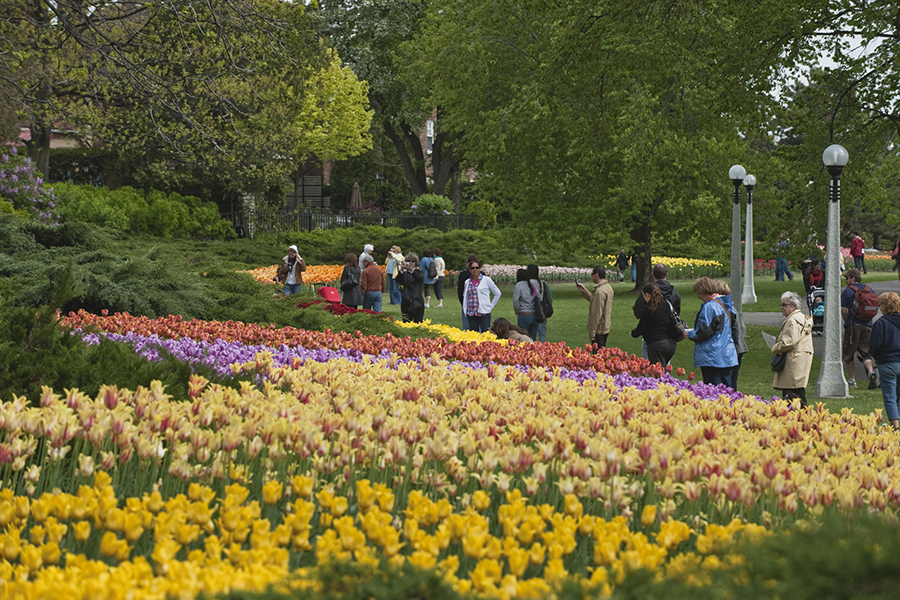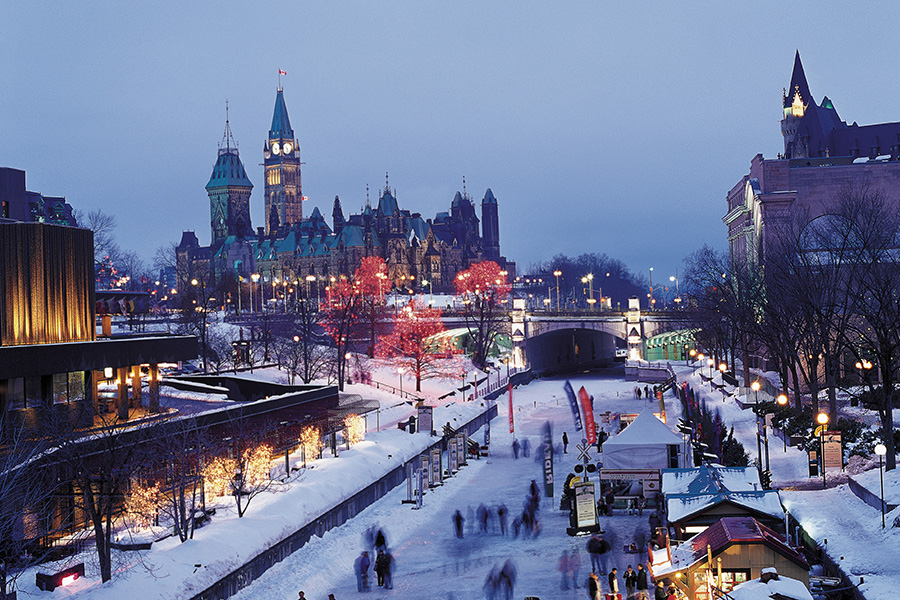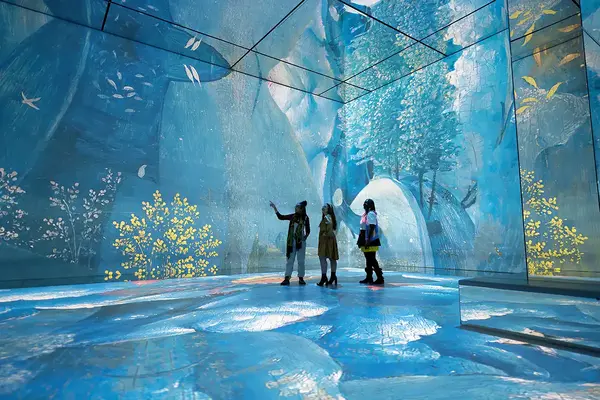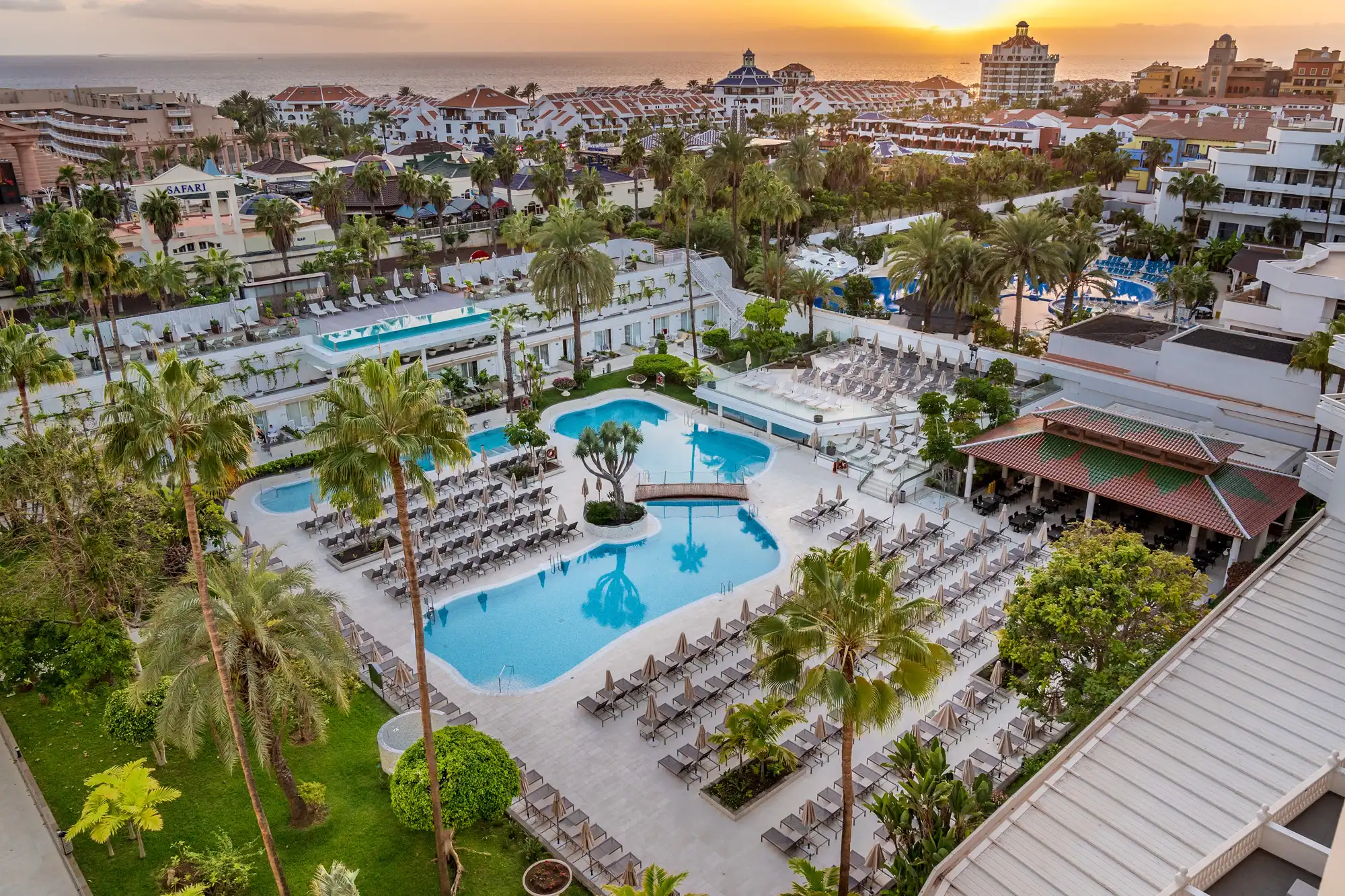The colourful Canadian event that can rival Keukenhof for beauty
With events kicking off from today, Ottawa’s Canadian Tulip Festival is the largest, free public display of its kind, and is sure to brighten up a springtime holiday to Canada

We’ve all heard of Keukenhof. However, you may be surprised to discover that the Netherlands aren’t the only place that clients can soak up the vibrancy of these seasonal, Dutch blooms.
Established in 1953, the Canadian Tulip Festival is Ottawa’s longest running, and largest event. Each spring the Canadian capital region is brought to life with one million tulips, celebrating the flower’s beauty and historical ties to Canada.
“The Canadian Tulip Festival has celebrated the historic royal gift of tulips from the Dutch to Canadians for eight decades,” Jo Riding, executive director of the Canadian Tulip Festival tells TTG. “It’s a symbol of international friendship,” she adds.
Since 1945, a royal gift of tulips has been sent to Canada in commemoration of the role Canadian troops played in the liberation of the Netherlands during World War II and the birth of Princess Margriet in Ottawa on 19 January 1943; the only royal personage to be born in Canada. Known as the ‘Tulip Legacy’ this gift has become an important part of Canadian culture.
Every year, 300,000 tulips by the National Capital Commission at Dow’s Lake in Commissioners Park, the site of the Tulip Festival. More than 100 breeds of tulips feature in 26 gardens. The event typically receives 450,000 visitors over the 10-day period, with more than half of these being tourists.
Tulip festivals head-to-head
By comparison, the world-renowned attraction of Keukenhof showcases the Dutch floricultural sector with an exhibit of seven million hand-planted spring-flowering bulbs and a variety of 800 different tulips each spring, for a duration of eight weeks.
Located in the town of Lisse, the park has grown into a highly-sought out tourist attraction since opening to the public in 1950, receiving 1.4 million visitors in 2023. With 32 hectares of brightly coloured, blooming flowers to be explored by bicycle, an electrically-propelled whisper boat or on foot; it’s no wonder the park is frequently dubbed the Garden of Europe.
Although on a slightly smaller scale, the Canadian Tulip Festival offers a rather different tourist, and sightseeing experience to that of Keukenhof. Positioned in the heart of Ottawa, clients can wander between the rows of flourishing tulips against the scenic backdrop of the Canadian Parliament, while stopping to enjoy the variety of attractions on offer.
“Our blacklight boardwalk is the only attraction like it in the world, with 2,000 blooms under UV light, visitors can see the tulips how bees and butterflies would. We also have daily film screenings, two children’s areas, food trucks, and a tulip market with local, hand-crafted tulip-themed inventory,” Riding shares.
The festival also presents an opportunity to showcase different stories of heroism in the Second World War. This year it will commemorate 100 years of the Royal Canadian Air Force, with a fly-by at the opening ceremony, a drone show at the closing ceremony and a sound and light experience entitled Operation Manna, when UK and Canadian forces carried out humanitarian food drops to relieve the Dutch famine of 1944-45.
Unlike Keukenhof, admission to the Canadian festival is free, so clients can visit the site as they please without the need to pre-book tickets. The festivals also take place at different times – Keukenhof was open from 21 March to 12 May this year, while the Canadian Tulip Festival runs from today until 20 May. Thus, it doesn’t have to be an either-or situation. If your clients have already visited Keukenhof and they loved it, why not use the Canadian Tulip Festival to entice them with a blooming lovely spring break to Ottawa.
For more information on the Canadian Tulip Festival, see tulipfestival.ca. For more on Keukenhof, see keukenhof.nl/en
More seasonal highlights in Ottawa
Festive: Winter Lights Across Canada is an annual event where 300,000 lights are installed across Ottawa each December. The capital’s buildings and monuments are lit-up with decorative illuminations, and if clients hire a car, there’s even a drive-through light display complete with tunnels.
Winter: Each year, the Rideau Canal in Ottawa freezes over to create the largest natural ice rink in the world. Welcoming visitors from around the globe, clients can skate along the 7.8 kilometre stretch of ice, keeping an eye out for zipping locals who use the rink as a means of commuting to work.
Spring through autumn: Thrill-seeking adventurers are bound to get a buzz out of riding the world’s first interprovincial zipline, connecting the provinces of Ontario and Quebec. Travelling at speeds of up to 40 kilometres per hour and at a height of 1,400 feet, clients can anticipate panoramic views of the Ottawa River and beyond. As a seasonal activity, this experience is open between May and October.
Summer Solstice: Experience Ottawa’s celebration of Indigenous people’s culture at the Summer Solstice Indigenous Festival, running from the 21-23 June 2024. Hosted by the Mādahòkì Farm, the festival showcases the talent of Indigenous peoples through music and dance performances, food and a series of educational workshops. An immersive opportunity to learn about Canada’s heritage, and traditional culture.
















